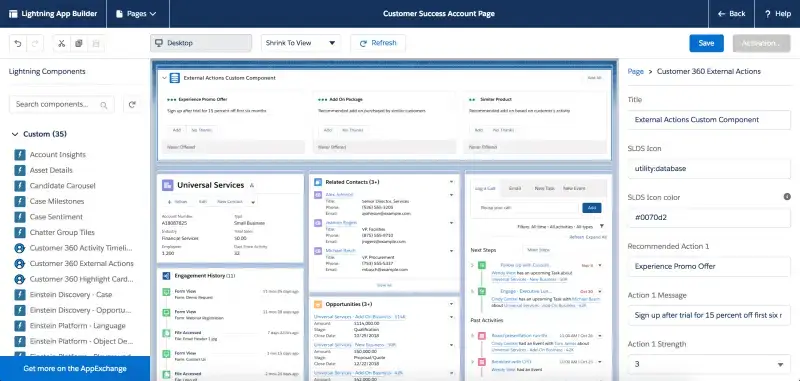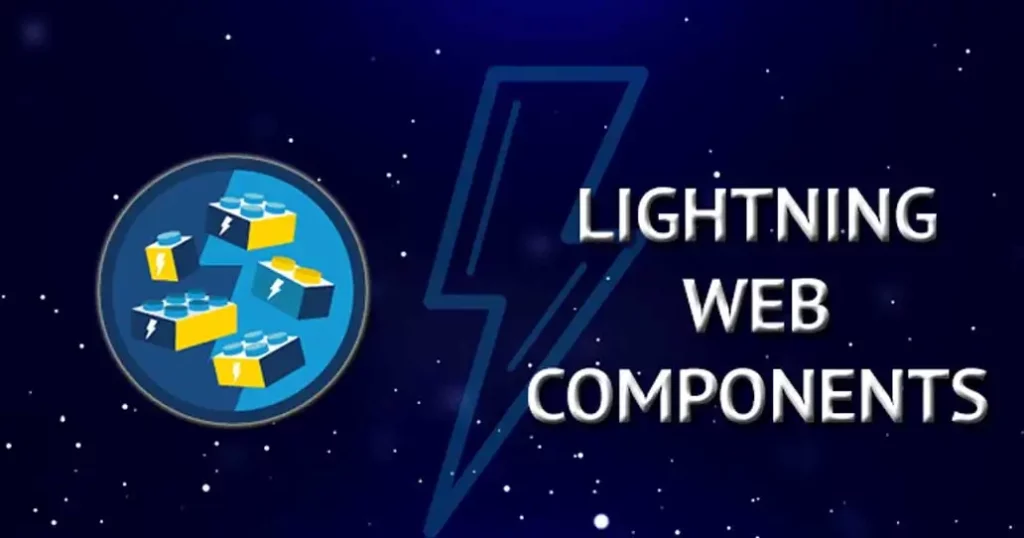User experience and performance are the focused components in web development. Salesforce, the leading CRM platform, recognizes the significance of these aspects and introduced Salesforce Lightning Web Components (LWC) to revolutionize the way developers build applications within the Salesforce platform. In this blog, we’ll provide an in-depth introduction to Salesforce Lightning Web Components, exploring their features, benefits, and how they differ from the previous Aura components.
What are Salesforce Lightning Web Components?
Salesforce Lightning Web Components is a modern and lightweight framework for developing user interfaces on the Salesforce platform. They are built using open web standards like JavaScript, HTML, and CSS, and use the latest web components specification introduced by the World Wide Web Consortium (W3C). LWC promotes reusability, maintainability, and extensibility, making it easier for developers to create highly interactive and performant applications that seamlessly integrate with Salesforce.
Key Features of Salesforce Lightning Web Components:
Here are some benefits of Salesforce Lightning Components:
Component-Based Architecture:
LWC embraces a modular architecture, allowing developers to break down complex applications into smaller, manageable components. These components can be reused across different parts of the application, simplifying development and maintenance.
Performance Optimization:
Lightning Web Components are designed with performance in mind. They boast faster load times and improved runtime performance, enhancing the overall user experience.
Standard Web Technology:
As LWC follows standard web technology, developers with expertise in JavaScript, HTML, and CSS can quickly adapt to the framework. This eliminates the need for learning proprietary languages or frameworks.
Enhanced Data Binding:
LWC facilitates reactive data binding, automatically updating the user interface when data changes, without the need for manual DOM manipulation.
Event-Driven Programming:
LWC supports event-driven programming, enabling seamless communication between components. Events can be dispatched and handled across components, improving code organization and maintainability.
Built-in Security:
Salesforce takes security seriously, and Lightning Web Components come with built-in security features that help prevent common web vulnerabilities.
Aura vs LWC:
Before the introduction of LWC, Salesforce developers used Aura components for building user interfaces. While Aura components were effective, Lightning Web Components brought some key improvements:
Performance:
LWC delivers better performance due to its use of modern web standards and optimized rendering.
Simplified Syntax:
LWC’s syntax is more concise and aligned with standard JavaScript, HTML, and CSS conventions, making it easier for developers to write clean and readable code.
No Dependency on Aura:
Lightning Web Components can coexist with Aura components but do not rely on the Aura framework. This allows for smoother transitions and enables developers to adopt LWC gradually.
How to Get Start with Lightning Web Components:

Alt Text:
Salesforce Lightning Web Components App Builder
- To start building with Lightning Web Components, you’ll need a Salesforce Developer Edition or a Salesforce sandbox for testing.
- You can set up your development environment with Salesforce CLI and a code editor like Visual Studio Code.
- Once set up, you can create your first Lightning Web Component using the Salesforce CLI commands.
- From there, you can explore the various features and capabilities of LWC, such as data binding, component communication, and integration with Apex (Salesforce’s backend language).
Conclusion:
Salesforce Lightning Web Components have revolutionized the era of web development on the Salesforce platform. Their lightweight, standard-based approach simplifies development, improves performance, and enhances user experience. As developers embrace this powerful framework, they can create sophisticated applications that leverage the full potential of Salesforce CRM. By mastering Lightning Web Components, developers can stay at the forefront of innovation and build solutions that meet the dynamic needs of today’s businesses. So, if you haven’t already, it’s time to dive into the world of Salesforce LWC and unlock a world of possibilities.




